Kukulkan (Quetzalcoatl): Feathered Serpent And Mighty Snake God
A. Sutherland - AncientPages.com - Known under several different names, Kukulkan (also Kukulcan), the Feathered Serpent, was one of the most important gods in Mesoamerica.
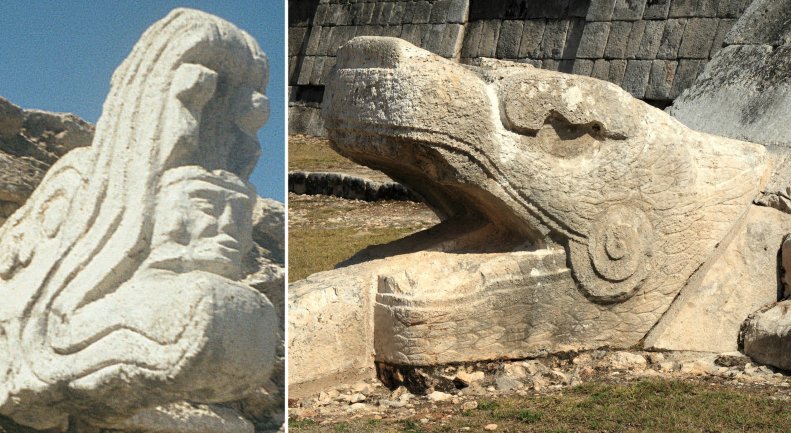 Left: Ballcourt marker from the Postclassic site of Mixco Viejo in Guatemala. This sculpture depicts Kukulkan, jaws agape, with the head of a human warrior emerging from his maw. Iamge credit: Simon Burchell - CC BY-SA 3.0; Right: Kukulkan at the base of the west face of the northern stairway of El Castillo, Chichen Itza. Image credit: Frank Kovalchek - CC BY 2.0
Left: Ballcourt marker from the Postclassic site of Mixco Viejo in Guatemala. This sculpture depicts Kukulkan, jaws agape, with the head of a human warrior emerging from his maw. Iamge credit: Simon Burchell - CC BY-SA 3.0; Right: Kukulkan at the base of the west face of the northern stairway of El Castillo, Chichen Itza. Image credit: Frank Kovalchek - CC BY 2.0
The Aztecs called him Quetzalcoatl, and the ancient Maya called him Kukulkan. The K'iche' group of Maya named him Gukumatz.
Was this mighty snake deity a genuine historical person?
It is not easy to trace the ancient history of Kukulkan. Like all of the feathered serpent gods in Mesoamerican cultures, Kukulkan is thought to have originated in Olmec mythology, and we still know very little about the mysterious Olmec civilization.
The true identity of the god Kukulkan becomes an even more significant problem due to the confusing references to a man who bore the name of the Mayan god. Because of this, the distinction between the two has become blurred.
Westside of the Temple of Kukulcan. Image credit: Luka Peternel - CC BY-SA 4.0
Around the 10th century, a priest or ruler appeared in Chichen Itza. This sacred site was one of the most potent Mayan centers of the Yucatán peninsula, Mexico, where we find El Castillo, also known as the Temple of Kukulkan.
Depicted as a serpent with feathers, Kukulkan showed up on many Mayan temples. This god later on became adopted by the Aztecs and Toltec people, and his name changed to Quetzalcoatl.
El Castillo square in plan and reaching 30 meters in height dominates the Main Plaza, and is the spectular structure at Chichen Itza. The temple was dedicated to the Feathered Serpent, Quetzalcoatl (known locally as Kukulkan). This deity is of Central Mexican origin and assumed a preeminent position in the pantheons of Teotihuacan and Toltec Tula.
Attesting to this dedication, low stone railings flanking the principal staircase on the northeastern side, those facing the Venus Platform, terminate in carved heads of Feathered Serpents.
Kukulkan originated among the Maya of the Classic Period (200 AD to 1000) when he was known as Waxaklahun Ubah Kan, the War Serpent. Maya writers of the 16th century describe Kukulkan as a historical person. Still, the earlier 9th-century texts at Chichen Itza never identified him as human, and artistic representations depicted him as a Vision Serpent entwined around the figures of nobles.
According to ancient Maya beliefs, Kukulkan - popularly known as the Feathered Serpent - was the god of the wind, sky, and the Sun. In Aztec culture and literature, he was a supreme leader of the gods, depicted just like Quetzalcoatl, whose name originates from the Nahuatl language and means "Precious serpent" or "Quetzal-feathered Serpent." Kukulkan gave humanity his learning and laws. He was merciful and kind but could also change his nature and inflict great punishment and suffering on humans.
According to Maya legend, the Maya were visited by a robed Caucasian man with blond hair, blue eyes, and a beard, who taught the Maya about agriculture, medicine, mathematics, and astronomy. This being was Kukulkan – the Feathered Serpent.
Kukulcan warned the Maya of another bearded white man who would not only conquer the indigenous people of Central America but would also enforce a new religion upon them before he was to return. Despite the warning, the Maya mistakenly welcomed the invading Cortes as Quetzalcoatl.
The cult of Kukulkan spread as far as the Guatemalan Highlands, where Postclassic feathered serpent sculptures are found with open mouths from which protrude the heads of human warriors.
Hundreds of North and South American Indian and South Pacific legends tell of a white-skinned, bearded lord who traveled among the many tribes to bring peace about 2,000 years ago. This spiritual hero was best known as Quetzalcoatl.
Some of his many other names were:
Kate-Zahl (Toltec)
Kul-kul-kan (Maya)
Tah-co-mah (NW America)
Waicomak (Dakota)
Wakea (Cheyenne, Hawaiian, and Polynesian)
Waikano (Orinoco)
Hurakan, the Mighty Mexico,
E-See-Co-Wah (Lord of Wind and Water)
Chee-Zoos
the Dawn God (Puan, Mississippi)
Hea-Wah-Sah (Seneca),
Taiowa, Ahunt Azoma
E-See-Cotl (New Guinea)
Itza-Matul (Yucatan)
Zac-Mutul (Mayan)
Wakon-Tah (Navajo)
Wakona (Algonquin)
Kukulkan emerged from the ocean and disappeared in it afterward. Before he left, he promised to return someday, but he never revealed when.
Written by – A. Sutherland - AncientPages.com Senior Staff Writer
Updated on February 13, 2024
Copyright © AncientPages.com All rights reserved. This material may not be published, broadcast, rewritten or redistributed in whole or part without the express written permission of AncientPages.com
Expand for referencesReferences:
Nichols, Deborah L. The Oxford Handbook of Mesoamerican Archaeology
Sierras E. The Shadow of Kukulkan
More From Ancient Pages
-
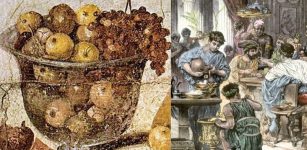 Citrus Was An Ancient Roman Symbol Of Status And Luxury
Ancient Symbols | Aug 23, 2017
Citrus Was An Ancient Roman Symbol Of Status And Luxury
Ancient Symbols | Aug 23, 2017 -
 Was Aztec And Mixtec Turquoise Mined In the American Southwest?
Archaeology | Jun 15, 2018
Was Aztec And Mixtec Turquoise Mined In the American Southwest?
Archaeology | Jun 15, 2018 -
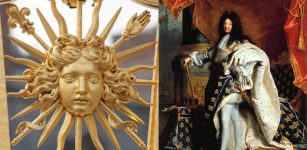 Why Was Louis XIV Called The Sun King?
Ancient History Facts | Jul 11, 2019
Why Was Louis XIV Called The Sun King?
Ancient History Facts | Jul 11, 2019 -
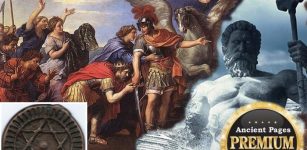 The Seal Of Solomon, The Fifth Element And The Andromeda Constellation Reveal An Intriguing Connection
Ancient Mysteries | Mar 8, 2018
The Seal Of Solomon, The Fifth Element And The Andromeda Constellation Reveal An Intriguing Connection
Ancient Mysteries | Mar 8, 2018 -
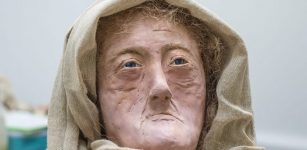 Face Of Iron Age Female Druid Reconstructed
Archaeology | Aug 20, 2019
Face Of Iron Age Female Druid Reconstructed
Archaeology | Aug 20, 2019 -
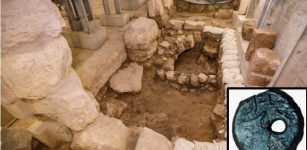 New Evidence Of The Destruction Of The Second Temple In The City Of David
Archaeology | Aug 5, 2023
New Evidence Of The Destruction Of The Second Temple In The City Of David
Archaeology | Aug 5, 2023 -
 Ancient Wooden Spade Found Under Melting Ice In Norway – Archaeologists Urge Hikers To Stay Alert
News | Sep 16, 2024
Ancient Wooden Spade Found Under Melting Ice In Norway – Archaeologists Urge Hikers To Stay Alert
News | Sep 16, 2024 -
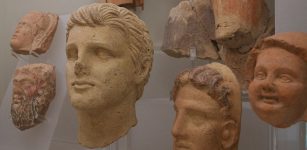 Intriguing Phenomenon Sheds New Light On The Etruscans
Archaeology | Sep 25, 2021
Intriguing Phenomenon Sheds New Light On The Etruscans
Archaeology | Sep 25, 2021 -
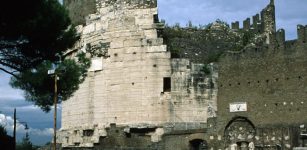 Unique Tomb Of Roman Noblewoman Caecilia Metella Reveals Secrets Of Ancient Concrete Resilience
Archaeology | Oct 14, 2021
Unique Tomb Of Roman Noblewoman Caecilia Metella Reveals Secrets Of Ancient Concrete Resilience
Archaeology | Oct 14, 2021 -
 Ancient Bizarre Experiments Conducted In Mysterious Underground Temple
Ancient Mysteries | Jun 28, 2018
Ancient Bizarre Experiments Conducted In Mysterious Underground Temple
Ancient Mysteries | Jun 28, 2018 -
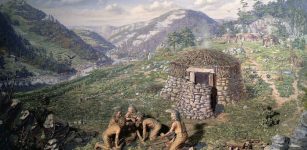 Neolithic Farmers Invented Methods To Fight Pests 8,000 Years Ago
Archaeology | Jun 30, 2022
Neolithic Farmers Invented Methods To Fight Pests 8,000 Years Ago
Archaeology | Jun 30, 2022 -
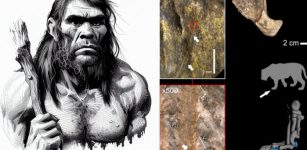 Neanderthals Hunted Dangerous Cave Lions In Eurasia – New Study Shows
Archaeology | Oct 12, 2023
Neanderthals Hunted Dangerous Cave Lions In Eurasia – New Study Shows
Archaeology | Oct 12, 2023 -
 Astronomer Johannes Kepler Saved His Mother From Being Burned As A Witch
Featured Stories | Jan 21, 2017
Astronomer Johannes Kepler Saved His Mother From Being Burned As A Witch
Featured Stories | Jan 21, 2017 -
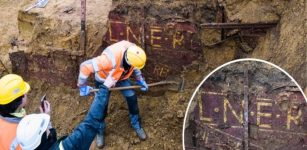 Mysterious Railway Car Discovered Under An Old Fortress In Antwerp, Belgium
Archaeology | Apr 12, 2024
Mysterious Railway Car Discovered Under An Old Fortress In Antwerp, Belgium
Archaeology | Apr 12, 2024 -
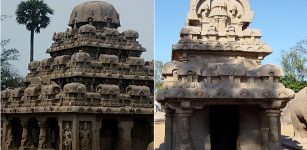 Mahabalipuram: Ancient Ruined City And Its Marvellous Rock-Cut Architecture In South India
Featured Stories | Jul 25, 2021
Mahabalipuram: Ancient Ruined City And Its Marvellous Rock-Cut Architecture In South India
Featured Stories | Jul 25, 2021 -
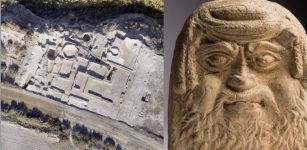 Huge Roman Forum Discovered In Unknown Ancient City In Spain
Archaeology | Sep 4, 2023
Huge Roman Forum Discovered In Unknown Ancient City In Spain
Archaeology | Sep 4, 2023 -
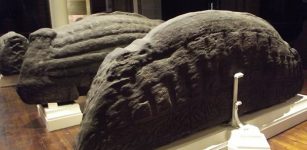 The Govan Stones – Treasures From The Viking Era In Britain
Featured Stories | Dec 27, 2015
The Govan Stones – Treasures From The Viking Era In Britain
Featured Stories | Dec 27, 2015 -
 New Pyramid Discovered In The Sacred City Of Caral – Home To South America’s Oldest Civilization
Archaeology | Feb 10, 2025
New Pyramid Discovered In The Sacred City Of Caral – Home To South America’s Oldest Civilization
Archaeology | Feb 10, 2025 -
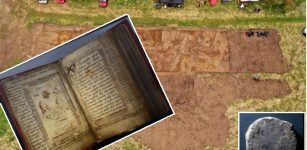 Archaeologists Discover Long-Lost Scottish Monastery Of Deer And Solve An Old Manuscript Mystery
Archaeology | Nov 21, 2023
Archaeologists Discover Long-Lost Scottish Monastery Of Deer And Solve An Old Manuscript Mystery
Archaeology | Nov 21, 2023 -
 8 Billion People: How Different The World Would Look If Neanderthals Had Prevailed
Featured Stories | Nov 18, 2022
8 Billion People: How Different The World Would Look If Neanderthals Had Prevailed
Featured Stories | Nov 18, 2022

